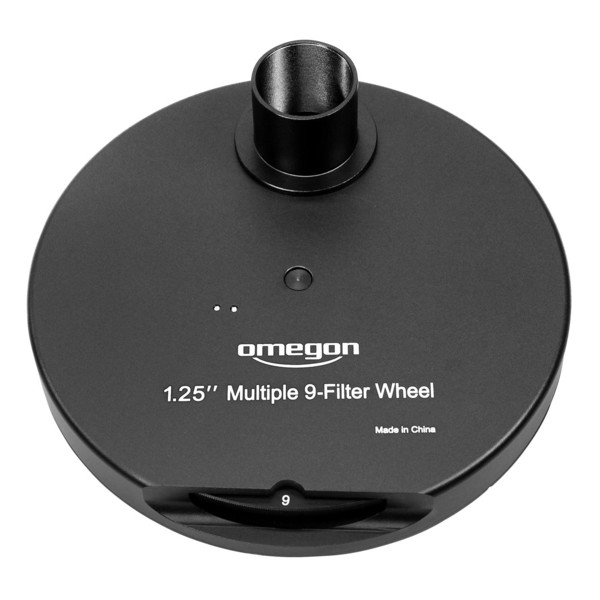

RCOS 12,5" avec réducteur 0.67, caméra CCD Moravian G2-4000, monture paramount ME, pose totale de 2H en L 1H, RVB 1H M13 - Le grand amas d'Hercule par Sébastien GOZE | concours n° 24.National Aeronautics and Space Administration Marshall Space Flight Center.One has suggested, that if such a "leach-hole" should be found, its connection with the meadow, if any existed, might be proved by conveying some colored powder or sawdust to the mouth of the hole, and then putting a strainer over the spring in the meadow, which would catch some of the particles carried through by the current.

#Telescope filter wheel portable
Date: 23/05/01 24/05/01 Location: Wiltshire UK Conditions: Calm, transparency=7, seeing=7 Optics: RCOS Ritchey-Chretien 12.5" at f/9 with AP focal reducer Mount: AP 900 GTO on Portable Pier Camera: SBIG ST-8E / CFW-8 Guiding: Integral ST-8E guiding chip controlled via MaximCCD.A Chaos Manor South Merry Christmas 12/24/09 omputin’ in the ountry 12/19/09 The Herschel Project Night Four: 159 Down, 241 to Go 12/12/09 Eye to Telescope 12/6/09 (Eye and Telescope software) The Herschel Project Night Three: 104 Down, 296 to Go 11/29/09 The Herschel Project Night Two: 39 Down, 361 to Go 11/22/09.Right: 10" Aries MC with ST-4000XCM and 20 min exposure under heavily light polluted skies near the center of Prague, Czech Republic (with IDAS LPS filter). Left: 24" RCOS with back-illiuminated CCD (>80% QE) and 5 min exposure under very dark skies of Rodeo, NM (USA). A very unhonest comparison of IC 5146 (The Cocoon Nebula).Get a close-up look at the planetarium's state-of-the-art Digistar 5 projection system and the impressive digital technology utilized to project stunning 360-degree immersive video on its large dome, which is housed in an eye-catching glass pyramid with a. TAMIU's Amazing Planetarium: A Virtual Tour Enjoy an exciting behind-the-scenes virtual tour of TAMIU's Lamar Bruni Vergara Planetarium.Yes, I know it’s supposed to be ‘Vern’ and that it’s an obvious homonym, but I can’t help For some silly reason every time I hear ‘Vernal’ I imagine “Ernest P. Posts about General Science written by astrogeek.The European Consortium institutes built the MIRI imager, spectrographs and coronagraph to ESA’s standards, and the detectors and dedicated cooler systems are provided by JPL.Īccess the broadcast quality version of the video. The main partners are ESA, a consortium of nationally funded European Institutes, the Jet Propulsion Laboratory (JPL), and Goddard Space Flight Center (GSFC).

MIRI was developed as a partnership between Europe and the USA. Lastly, another set of mirrors takes the light beam coming out of the filter wheel and recreates the image of the sky on MIRI’s detectors. Inside the instrument, a system of mirrors reformats the light beam and redirects it till it reaches a filter wheel where the desired range of mid-infrared wavelengths is selected from a set of 18 different filters each with its own specific function (the beam takes a light blue colour in the animation). The pick-off mirror, acting like a periscope, receives the light from the telescope, shown in deep blue, and directs it into MIRI’s imaging module. We first take a look at its mechanical structure with its three protruding pairs of carbon fibre struts that will attach it to Webb’s instrument compartment at the back of the telescope. This artist’s rendering shows this path for MIRI’s imaging mode, which provides imaging and coronagraphy capabilities.

To pack all these modes in a single instrument, engineers have designed an intricate optical system in which light coming from Webb’s telescope follows a complex 3D path before finally reaching MIRI’s detectors. To support the whole range of Webb’s science goals, from observing our own Solar System and other planetary systems, to studying the early Universe, MIRI allows scientists to use multiple observing techniques: imaging, spectroscopy and coronagraphy. The Mid-InfraRed Instrument (MIRI) of the James Webb Space Telescope (Webb) sees light in the mid-infrared region of the electromagnetic spectrum, at wavelengths that are longer than our eyes can see.


 0 kommentar(er)
0 kommentar(er)
